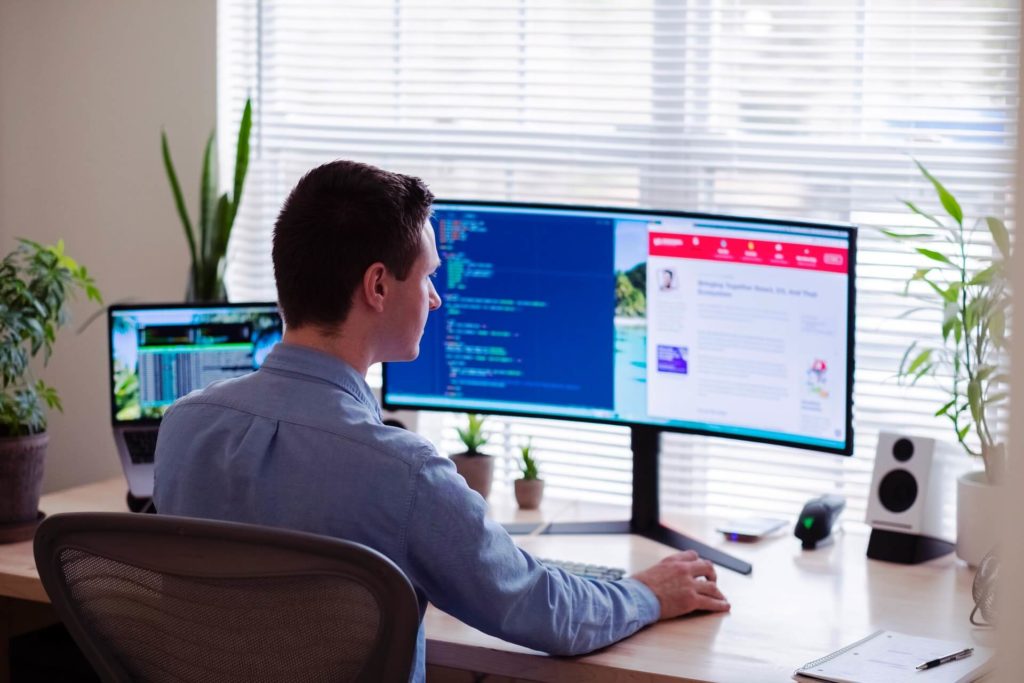If you’re still waiting for a new normal, you’re wasting your time. Most workplaces won’t ever return to the old way of doing things, nor will their current policies and practices last indefinitely. The corporate world has demonstrated that rapid change is possible, and frankly, change might be the new normal.
So how are companies handling all of these new situations? Though there is no objective way to measure productivity, many employees and business leaders would say they’ve managed to be just as productive as ever.
What does it mean to be productive? The definition is changing
Productivity can be a double-edged sword. Managers want to see that their teams are being productive. Property managers aim to do more and more in the same amount of time. But when greater productivity doesn’t lead to increased profitability or growth, it’s more likely that people are getting bogged down with tasks instead of contributing to the most important company goals.
For some, the pandemic was devastating. They could not work. Revenue dried up. Their businesses failed. But for white-collar workers, there were good and bad results. On the positive side, most companies adapted to a 100% work-from-home model incredibly quickly, and incredibly well. Employees proved what most of them already suspected – they could be just as productive, or even more productive, while working from home.
Without having to try and drown out chatter from a neighboring colleague, take multiple breaks to answer “quick questions” throughout the day, leave early to pick up the kids, or stay late because they got handed a file at 4:30 pm, employees could better concentrate on the projects and tasks that really mattered. Some may have even worked for longer because they didn’t have a one-hour commute ahead of them.
Since company leaders couldn’t physically watch staff, they had to trust that the work was getting done. And in most cases, it was. Since this massive change, people are reconsidering what it means to be productive. You don’t need to fill a long to-do list in order to be busier; it’s quality work that’s going to make a true difference.
Hybrid is here to stay, so leaders need to think about new ways to maintain productivity levels
Employees have more power than ever before. Top talent won’t have trouble finding a new job if their current place of employment isn’t willing to be more flexible. Hybrid work environments are here to stay, which means C-level executives are going to have to start thinking about long-term strategies for supporting strong productivity levels.
Right now, things are pretty good, and the University of Southampton’s Work After Lockdown study has the numbers to prove it. 1,035 participants were surveyed about their work from home experience. Most participants were not working from home before the pandemic hit.

Respondents were asked whether their productivity felt higher during the pandemic than it was before. Nine in ten (88.4%) employees confirmed that they got the same, if not more, work done at home as in the office.
People with the highest self-reported productivity said that they worked better from home because:
- They had the freedom to re-order the tasks in their jobs
- They could concentrate on one activity for a long time if needed
- They were less distracted by things going on around them
- They could return to focusing on a task when they were interrupted
So, while remote workers are motivated, there are factors that can bring productivity levels down. Mental well-being is probably the biggest item. Though employees had the tools they needed to complete work at a normal pace, some have been or will be impacted by depression, isolation, and detachment. While there are many benefits to working from home, there are drawbacks too. Some staff need social interaction with others. They enjoy “watercooler chats.” Others have a harder time seeing how their work contributes to a bigger goal when they aren’t in the office, and that can make them feel unfulfilled.
Leaders will need to be mindful of these types of productivity detractors and ensure efforts are being made to engage and support team members in and out of the office.
Changes for building managers
As more companies formalize plans to go hybrid or fully remote, some of them will downsize or get rid of their office spaces for good. This is not the best news for commercial property managers, however, there will always be a demand for dedicated working spaces.
Moving forward, tenants will want greater flexibility and will likely want to be more self-sufficient. For example, employees working flexible hours may need to access on-premises sites outside of regular office hours, so property managers should be prepared to work with tenants to make round-the-clock building access possible.
On that note, it might be time to consider updating things like light fixtures and HVAC systems. Instead of having the lights turn on and off at set times, or leaving them on all night, smart lights would sense when people are in a room. When movement is no longer detected, they would turn off after a certain amount of time.
Giving tenants access to workplace management software like Office Control would also improve tenant-management relationships, and give tenants a good reason to renew their leases. This user-friendly platform gives tenants the ability to submit service requests, share internal notices, and even manage schedules through desk or room bookings.
When thinking about their own productivity, managers may want to invest in workforce management tools to ensure they maintain the right balance of staff. Workforce management means recognizing the top priorities of your company, and anticipating human capital challenges so that the proper actions can be taken to stay ahead of potential issues and maintain efficiency.
When it comes to technology, focus on quality over quantity
The more time that your staff spend switching between apps and platforms, the less time they spend on meaningful work. Technology like Zoom, Slack, and Microsoft Teams has proven to be essential since departments are seldom in the same place anymore. Companies need it to collaborate and communicate. However, leaders should identify the most effective technology tools, and be prepared to get rid of the rest.
Similarly, when it comes to upskilling or updating knowledge, a learning management system that allows staff to take courses or complete training remotely can be very valuable. To support continuous learning, HR personnel should emphasize e-learning courses as opposed to instructor-led training. Many reputable schools already offer on-demand courses that support asynchronous learning.
Conclusion
Being a productive worker doesn’t have to mean working 12- or 14-hour days. When companies move away from working in excess, they may be surprised to see that productivity increases. Furthermore, fostering a healthy working environment often leads to a higher employee retention rate.
In 2022, there is a strong belief that companies will start or continue to develop long-term plans and strategies to maintain employee productivity post-pandemic. As companies embrace hybrid models, they will also devote more attention to supporting people’s emotional and social well-being.
Property managers are also expected to make changes to help their tenants boost productivity when they are in the office. Workforce management will help them make regular changes to their operations while minimizing disruptions.


